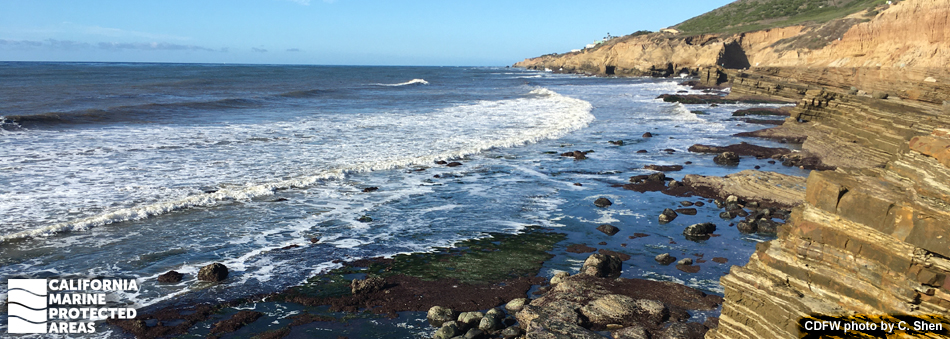
Overview
Cabrillo State Marine Reserve (SMR) is a marine protected area (MPA) that extends off Point Loma in San Diego County, about 10 miles north of the United States/Mexico border. Just under half a square mile, this MPA protects kelp forests, surfgrass beds, sandy seafloor, intertidal habitat, and nearshore rocky reefs, offering a spectacular gateway to explore the marine environment. A well-known location for tidepooling, thousands of visitors descend upon the shoreline of Cabrillo SMR each year to explore the rocky intertidal zone full of red and brown algae, barnacles, snails, chitons, whelks, limpets, and crabs.
An offshore kelp forest is home to kelp bass, California sheephead, abalone, and urchins. Onshore visitors can watch for gray whales during their annual migration or explore the adjacent Cabrillo National Monument, which offers visitors a glimpse into California history and culture, including the landing site of Juan Cabrillo’s journey to North America.
Regulations
It is unlawful to injure, damage, take, or possess any living, geological, or cultural marine resource.
California Code of Regulations Title 14, Section 632(b)(146)(opens in new tab)
Quick Facts
MPA size: 0.39 square miles
Shoreline span: 1 mile
Depth range: 0 to 30 feet
Habitat composition*:
- Rock: 0.60 square miles
- Sand/mud: 0.15 square miles
*Habitat calculations are based on three-dimensional area and may exceed the total MPA area listed above.